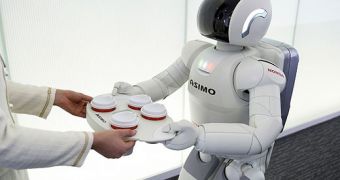Today's robots need to be pre-programmed in order to handle themselves around the house, but this kind of software has its limitations, combined with the physical limitations of the robots themselves. Unfortunately the technology is not so advanced, yet, to allow them to go by themselves and really perform all the boring chores around the house to help the owners.
In other words, they're clumsy. For example, Roomba, the little critter that does a great job cleaning floors can't do much else. Even the most sophisticated humanoid robot, Honda's ASIMO, that can walk on two feet in a manner resembling human locomotion at up to 6 km/h (3.7 mph) and can greet people cannot perform really useful tasks in the complex world of a residence.
It's time humans got more help around the house from one robot, since no one wants to turn their house into a robot convention. To help robots become more agile and graceful, roboticist Oussama Khatib at the Stanford Artificial Intelligence Laboratory in California and his colleagues adopted a new strategy.
They want to make the machines use the same energy minimization in motion that humans learn in their youth. What better way to do that than to watch and learn? So, they're trying to mimic the masters of efficient movement, a Tai Chi master.
Tai Chi is a Chinese martial art promoting health and longevity through slow motion exercises, the same one many elderly use to recuperate from injuries and to regain control over their movements.
"We want to create robots that can work with humans, so we wanted robots to learn how humans move and interact with the world, which led us to go and try to better understand how humans move," said Khatib.
"The tai chi master helps provide data on motions that are closer to optimal in performance for comparison," he continued. So he developed computer applications that demonstrate how to minimize effort, which could be integrated to future household robots to make them more agile and efficient.
ASIMO will probably be the first robot to benefit from this new software, when it's finished, which could transform it into a really useful tool, that could one day perform various tasks around the house, like ironing and clearing tables.

 14 DAY TRIAL //
14 DAY TRIAL //